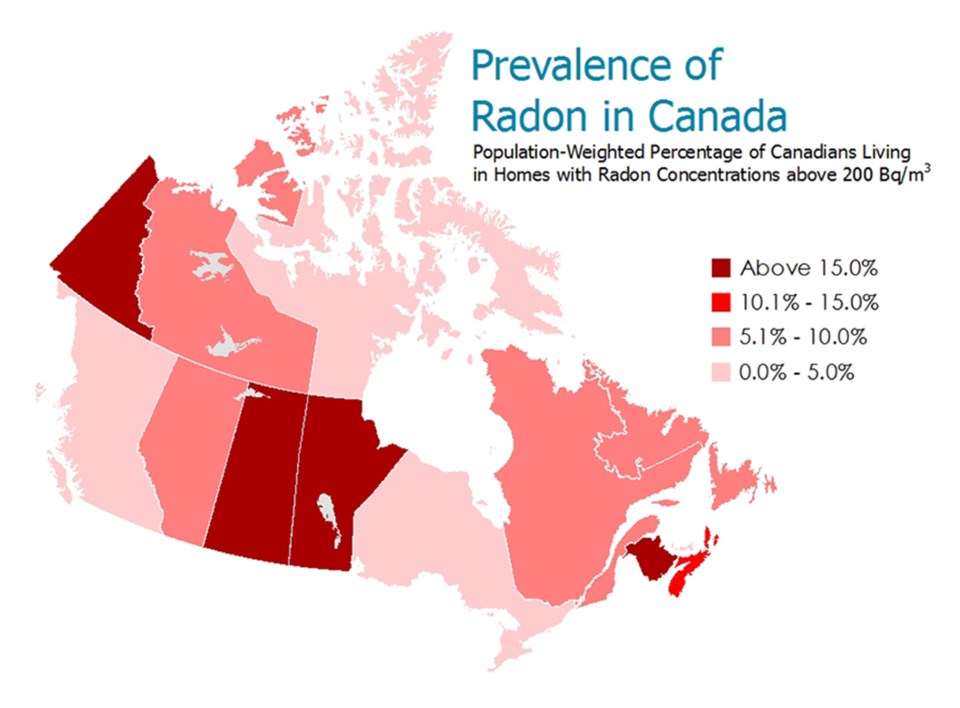And when it comes to exposure to the cancer-causing radioactive gas known as radon, Moose Jaw appears to be in a positive position.
The Moose Jaw Fire Department has little knowledge of the gas being found in the city in excessive amounts, even with more than 15 percent of homes in Saskatchewan having high enough levels of the gas to be a concern.
“We haven’t heard anything about it, in my time here there was one individual who questioned about it and they were going to hire a private company to come in and we never heard back from them,” said Deputy Fire Chief Mike Russell. “So we haven’t heard anything on our end recently about radon exposure in Moose Jaw… and that’s a good sign.”
Radon is a by-product of the decay of uranium in soil and rock. With Saskatchewan having high enough concentrations of uranium in some areas for it to be mined, the potential for radon being found is higher than most areas of the country -- hence the higher percentage of homes with dangerous levels.
The danger from radon comes through the long-term damage it does to the lungs. Smoking is the number one cause of lung cancer in the country, but radon exposure sits second, with 3,000 people per year in Canada dying from radon-induced lung cancer.
Symptoms are similar to what one would expect -- excessive coughing, blood when one coughs, and persistent cases of bronchitis and pneumonia for no apparent reason. The danger from radon is greatly magnified if you smoke.
And with people staying in their homes more due to COVID-19, increased instances and growing severity of coughing and lung issues unrelated to the disease could be a sign of radon poisoning.
There is good news, though.
The gas is easy to detect, and even though every home has some amount of radon, it’s rare to be found in dangerous levels above 200 bequerel per cubic metre (Bq/m3) -- a unit of detecting radioactivity.
Testing kits are inexpensive and available from most hardware stores. Once set in the lower level of your home, they’re left for three months and returned to the supplying company to be tested.
If excessive radon levels are found, radon professionals can install a radon mitigation system inside of a day, with the system capable of reducing radon levels by 80 per cent.
For plenty more information, including links to all sort of information with regards to radon, its dangers and ways of dealing with the gas, be sure to click right here.




